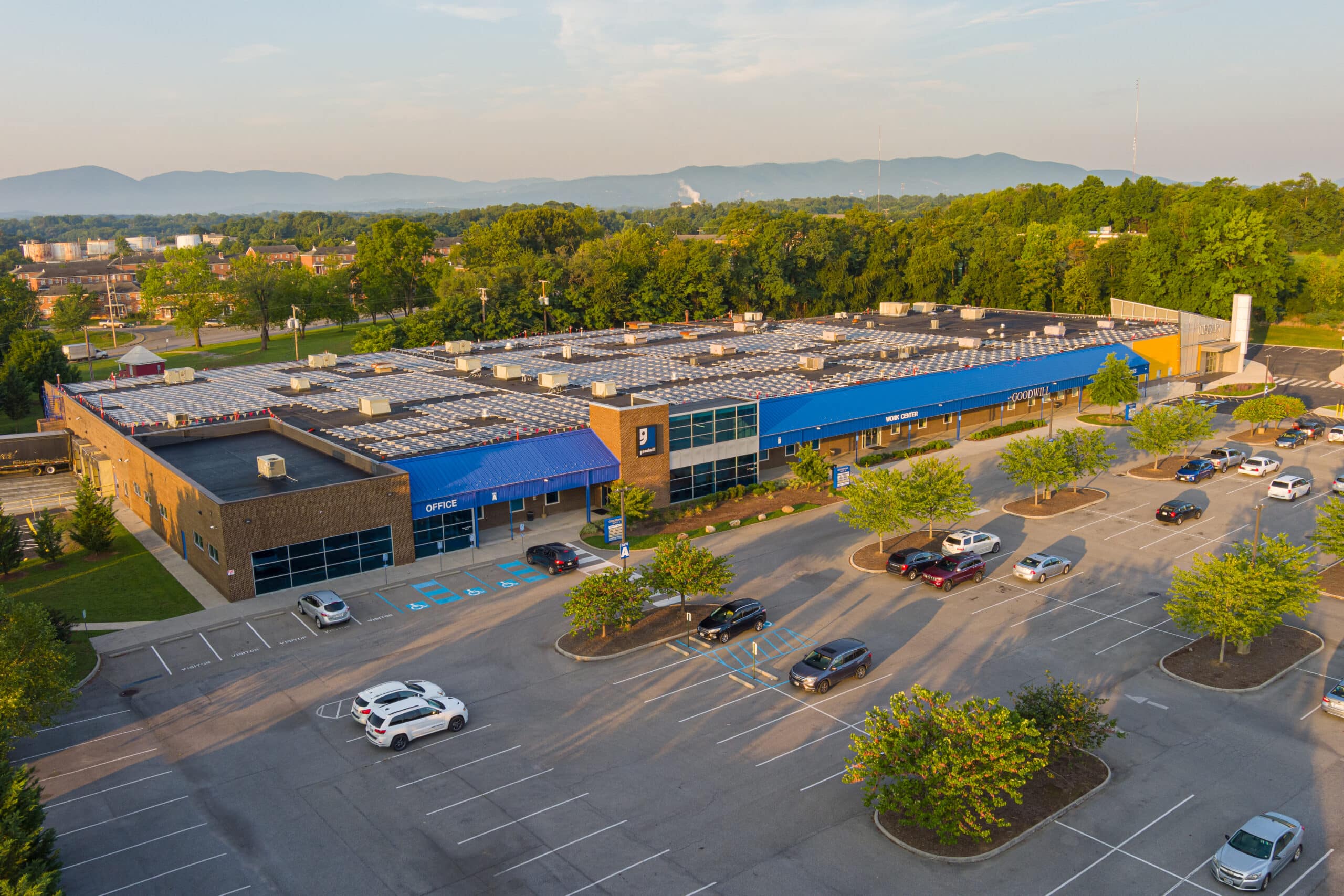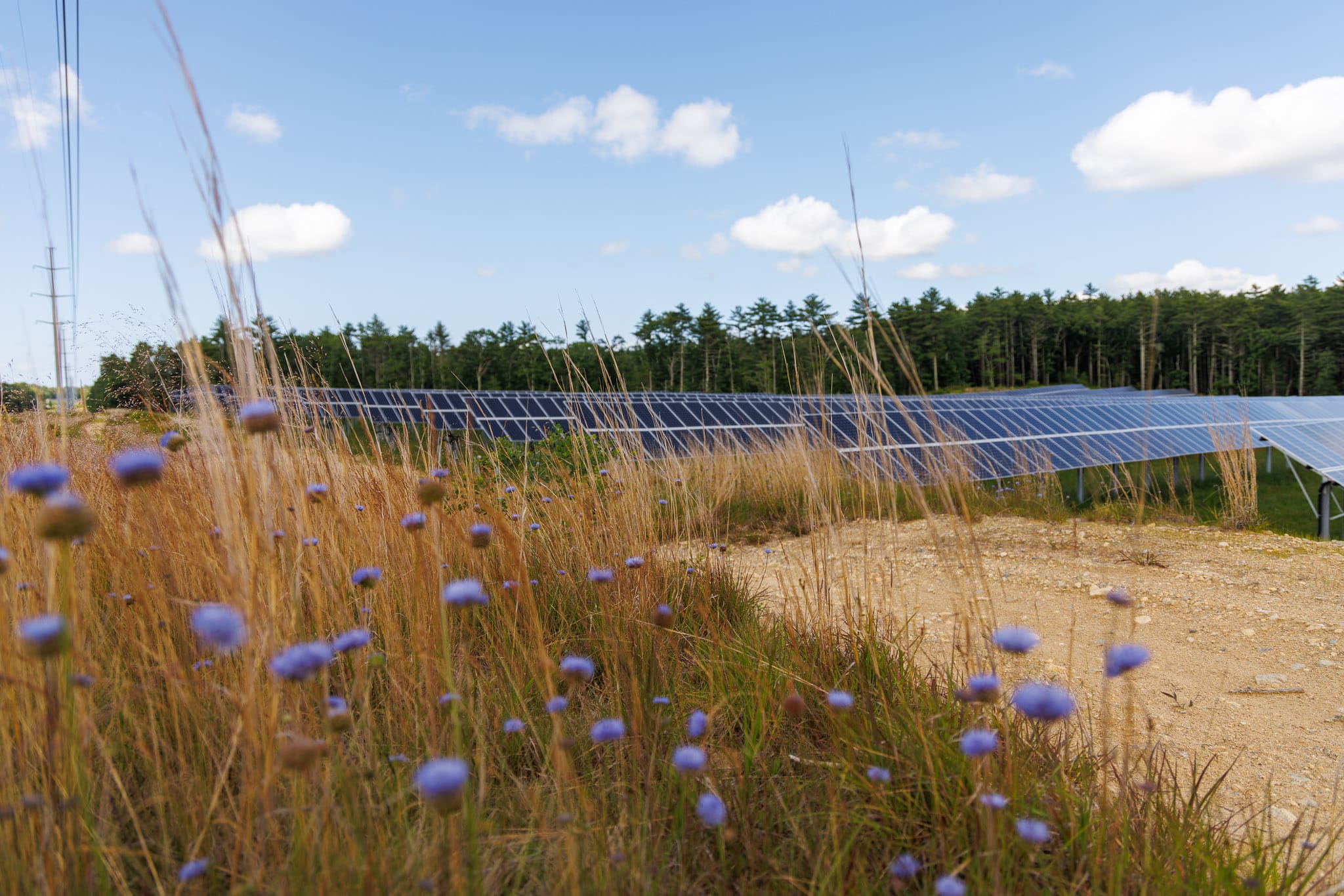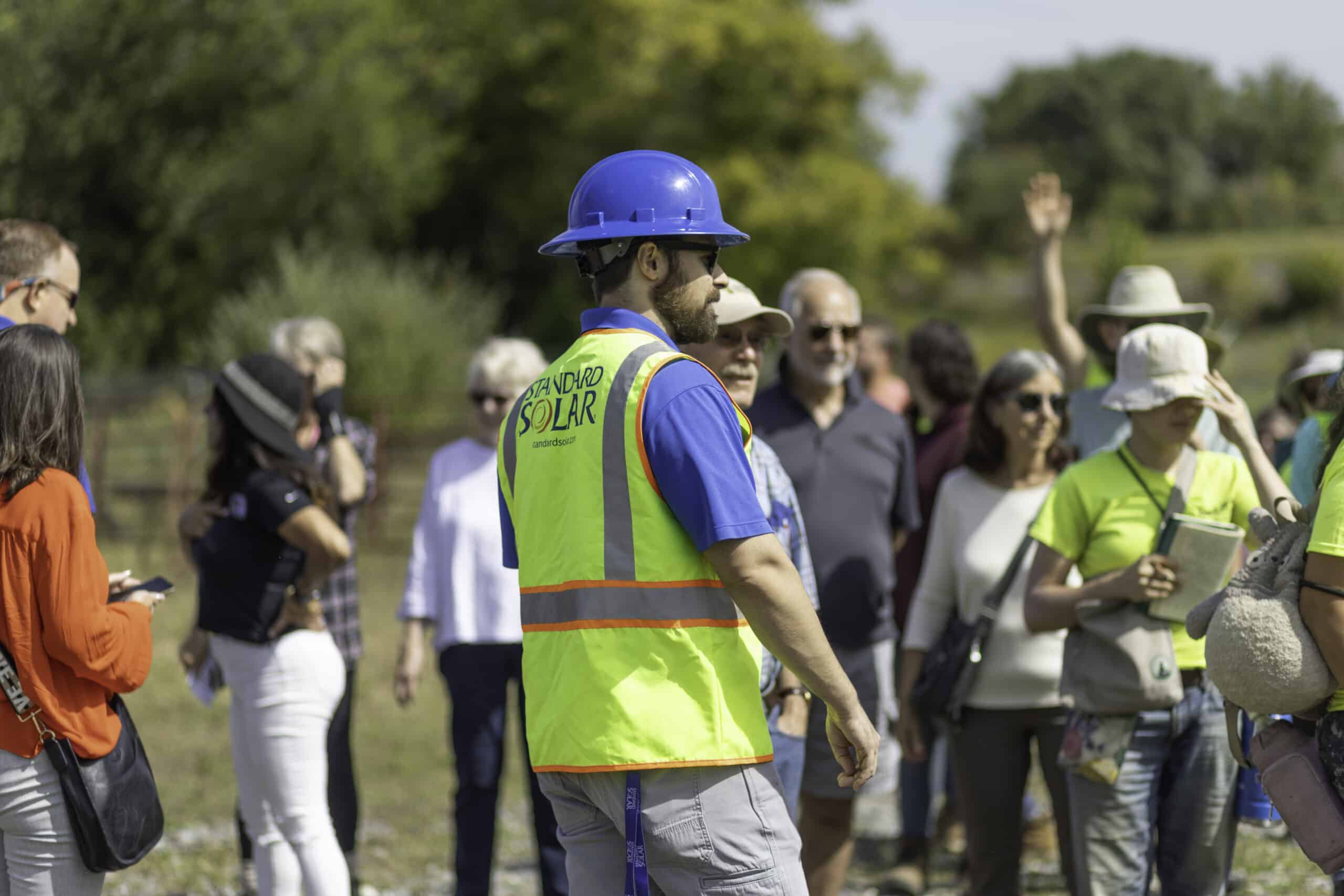NL IL 1400 East Road
Blackstone, Livingston County, Illinois
The NL IL 1400 East Road solar project, located in Blackstone, Livingston County, Illinois, is expected to provide approximately 7.72 megawatts (MWdc) of renewable energy annually in Illinois. This project will contribute to the State’s goal of achieving 100% renewable energy by 2050.
Spanning 104 acres, more than 13,200 modules of this single-axis tracker solar array are expected to produce approximately 11,600 megawatt hours (MWh) of renewable energy annually, meeting the growing demand for sustainable electricity in the region and strengthening the reliability of the Illinois electricity mix. This will displace up to 4,100 metric tons of CO2 each year.
This project will be a Community Solar Garden, aiming to expand access to solar energy for Illinois residents who cannot afford or do not have the space to install solar panels on their own properties, while reducing the cost of their electricity bills.
The project will contribute to the local economy by creating construction jobs and generating long-term economic value through increased tax revenue, community investments, and agrivoltaics opportunities, including agricultural dual use and solar grazing. Construction began in October 2025, with operations expected to start by August 2026, marking an important step toward a cleaner and more sustainable energy future for all people in Illinois.
Energy generation in agricultural land
The system has been designed with sufficient space to plant pollinator gardens along the perimeter and between the modules. The seed mix contains only plant species native to Illinois and will allow different plants to bloom and bear fruit throughout the spring, summer, and fall seasons, providing food for pollinators from April to October. Vegetated grounds contribute to stable foundations by preventing erosion and increasing soil permeability. Planting native and pollinator-friendly plants supports biodiversity by providing food for local species, including bats, birds and insects.
Benefits
Economic Impact
The project will create local construction jobs during its building phase, supporting the regional workforce. Beyond its immediate job creation and rent payments, the project will generate substantial long-term economic value by contributing to the local tax base, helping to fund essential community services and infrastructure. By fostering economic growth and investing in renewable energy, the NL IL 1400 East Road solar project demonstrates a commitment to both environmental sustainability and the financial well-being of the community, making it a valuable asset for Livingston County’s future.
Clean Energy Impact
Solar panels do not emit greenhouse gases into the atmosphere, and they do not pollute the surrounding environment.
By producing approximately 11,600 megawatt hours (MWh) of sustainable electricity annually, it will provide a reliable source of carbon-free power to the Illinois grid. Using the EPA equivalencies calculator, this project would produce enough electricity to power 1,750 U.S. homes annually.
Offsets
The project is expected to displace approximately 4,100 tCO2e (Metric tons of Carbon Dioxide Equivalent) annually, based on the United Nations Framework Convention on Climate Change (UNFCCC) Dataset on Default Grid Factors for International Financial Institutions (IFI). Using the EPA equivalencies calculator, the carbon displaced from not burning fossil fuels would be equivalent to the carbon absorbed by more than 10,200 acres of U.S. forests in a year (an area much larger than 7,000 football fields).
Location
Dwight, Livingston County, Illinois
Project Size
7.72 MWdc
Timeline to operation
Construction began in October 2025, with operations expected to commence in August 2026.
The NL IL 1400 East Road Solar Project will generate approximately 11,600 MWh of renewable electricity each year—enough to power about 1,750 homes and offset more than 4,100 metric tons of CO₂ annually, equivalent to the carbon absorbed by over 10,200 acres of U.S. forests.
Covering 104 acres in Livingston County, this Community Solar Garden features over 13,200 single-axis tracker panels and integrates pollinator-friendly native plants, as well as agricultural dual-use and solar grazing, to advance both clean energy and land stewardship.
Location
Located in Blackstone, Livingston County, Illinois, the NL IL 1400 East Road Solar Project spans 104 acres of agricultural land designed for dual use—renewable energy generation and ecological enhancement. With a capacity of 7.72 MWdc, it supports Illinois’ 2050 100% renewable energy while bolstering grid reliability and community sustainability.

Economic Impact
- The project will create local construction jobs during development, supporting the regional workforce and generating near-term economic activity in Livingston County.
- Once operational, it will generate long-term tax revenue to support essential community services and infrastructure.
- Through agricultural dual-use and solar grazing, the project enhances local economic productivity while maintaining the land’s agricultural value.

Goodwill Industries, VA, 0.5 MWdc

Port Newark Container Terminal, NJ, 3.29 MWdc
Clean Energy Impact
- Generating approximately 11,600 MWh of clean electricity annually, the project will power around 1,750 homes in Illinois with carbon-free energy.
- It will displace more than 4,100 metric tons of CO₂ emissions annually, supporting Illinois’ goal of achieving 100% renewable energy by 2050.
- The project strengthens the reliability of the Illinois electricity mix by diversifying and decentralizing clean power generation.
Environmental Impact
- Native and pollinator-friendly vegetation planted throughout the site will improve soil health, prevent erosion and support biodiversity.
- The habitat design provides food and shelter for pollinators, birds, bats and other local wildlife from spring through fall.
- By combining solar energy generation with ecological restoration, the project demonstrates how renewable infrastructure can coexist with and benefit natural ecosystems.

Carver, MA, 2.8 MWdc
Project Location
Where is the NL IL 1400 East Road solar project located and is it visible from public roads?
The NL IL 1400 East Road solar project is in the Village of Blackstone, Livingston County, Illinois.
Parts of the project may be visible from public roads, as it is built on rural and private land.
Who owns the land on which the NL IL 1400 East Road solar project is built?
The NL IL 1400 East Road solar project is being built on private land which is leased by Standard Solar to operate the system. This land will be leased for a period of 20 to 25 years, once the project is operational.
Safety & Operations
How do solar panels work?
Solar panels work by converting sunlight into electricity through a process called the photovoltaic effect. Each panel is composed of many solar cells, typically made of silicon, a material that can absorb sunlight. When sunlight hits these cells, it excites electrons, creating an electric current. This current is collected and directed through wires to power homes, businesses or the electrical grid. Solar panels are often installed in arrays to capture as much sunlight as possible, and they work best in sunny locations. By harnessing the sun’s energy, solar panels provide a clean, renewable source of electricity that does not produce harmful emissions.
What happens after the useful life of a solar project?
At Standard Solar, we are committed to sustainability throughout the entire lifecycle of our projects. The NL IL 1400 East Road solar project is expected to produce electricity for 25 years. After this time, when the project reaches the end of its operational life, well-established processes are in place to ensure responsible repowering, decommissioning, and recycling.
Standard Solar has a decommissioning plan in place to safely remove equipment, restore the land to its original state, and recycle materials like glass, metal, and silicon from the solar panels. Such programs enable Standard Solar to minimize waste, prevent any burdens on the community, and support the circular economy, ensuring that renewable energy remains a sustainable solution for future generations.
Do solar projects make noise?
Solar projects are designed to operate quietly, making them an ideal option for generating renewable energy without disrupting nearby communities, agriculture or wildlife. The primary components–solar panels–make no noise during operation. Some equipment, such as inverters or transformers, may produce a low humming sound (up to 80 dB) when converting solar energy into electricity, but this noise is minimal and typically only noticeable when the equipment is close by (less than 10 feet). Overall, solar projects are a clean, quiet and community-friendly energy solution.
Solar panels rely on sunlight to generate electricity, meaning the system is silent during the night-time.
Will the project produce glare?
The design of solar projects, including this one, minimizes the potential for glare. Solar panels are specifically engineered to absorb sunlight, not reflect it, as their primary function is to convert sunlight into electricity. Modern panels are coated with anti-reflective materials to further reduce any reflection. Additionally, projects undergo detailed studies and modeling during the planning phase to ensure they do not create glare that could affect nearby residents, drivers, aviation and wildlife.
Environment & Wildlife
How will the project manage erosion and stormwater during its lifetime?
This project has been designed with comprehensive measures to effectively manage erosion, stormwater and dust control throughout its lifetime, ensuring minimal impact on the surrounding environment and no disturbances to wetlands or waterways. The project has all applicable local, state, and federal permits and certifications.
Before construction, the site underwent a thorough assessment, and best management practices were implemented, including silt fences, sediment basins and buffer zones, to mitigate runoff during the building phase.
Once operational, the site will be stabilized with native vegetation, including blooming grasses and fruiting shrubs, which will provide food and shelter to pollinators from April to October, and secure the soil with their root systems. Regular monitoring and maintenance will ensure that erosion, stormwater, and dust control remain effective throughout the project.
What is the impact on area wildlife?
Standard Solar carefully considers the impact on wildlife and biodiversity in all projects to minimize disruption to local ecosystems. Detailed environmental studies are conducted to identify sensitive habitats and species, and to mitigate potential adverse impacts.
Consultation with the USFWS
- The Illinois Department of Natural Resources found no State-listed threatened or endangered species, Illinois Nature Preserves, or registered Land and Water Reserves in the vicinity of the project location.
- The U.S. Fish and Wildlife Service (USFWS) identified four endangered species that could potentially occur at the site: the Indiana Bat, the Monarch Butterfly, the Whooping Crane and Eastern Prairie Fringed Orchid.
- However, no critical habitats were found within the project area, given that the site is an agricultural field
Creating a wildlife-friendly site
- There is no tree clearing planned at the site, leaving bald eagles or migratory birds undisturbed.
- Bat boxes will be installed along the perimeter.
- The site will be seeded with plants that will provide food and habitat for bees, beetles, butterflies and birds should they occur on the site.
- Wildlife-friendly fencing and vegetation buffers will be used to allow the safe movement of animals and birds.
- The site will be monitored to ensure minimal impact and compliance with biodiversity and ecosystem protection regulations.


